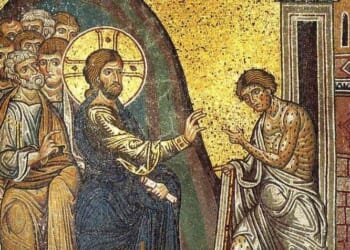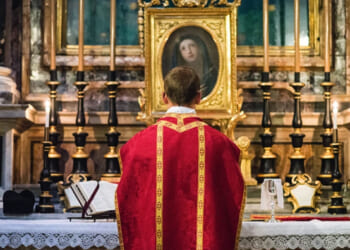As I demonstrated in my previous article, several passages from the Bible allude to the existence of Purgatory. In this article, I will explain how such a doctrine came about in the context of the history of the Catholic Church. This essay will present highlights of the theological evolution of Purgatory—from its conceptualization in the early years to its formalization as a Catholic doctrine—thereby illustrating how the Church’s teachings on purification and the communion of saints have influenced our understanding of Purgatory as a “physical place.”
For Catholics, Purgatory is a “place of purification” for souls that are already destined for heaven but require further processing, if you may, so that they can enter heaven in an exalted state. This concept has significantly evolved over the centuries, beginning with early Christian theologians and culminating in formal Church doctrines.
St. Augustine of Hippo (354–430 AD) distinguished the purifying fire that saves from the eternally consuming fire that punishes the unrepentant (Augustine, Book IV). Pope Gregory the Great (540–604 AD) established a connection between earthly penance and purification in the afterlife (Moreira, 2023). Peter the Lombard, among other Church writers, suggested a distinction between those who have died and are beyond any salvation and those who have benefited from their own purgatorial penances as well as from the prayers of the living for their sake (Lombard, 2007). All Souls’ Day, established in the 10th century, drew widespread attention to the condition of departed souls. The idea of Purgatory as a physical place (like heaven and hell) became a theological opinion among some Roman Catholic theologians in the late 11th century (Moreira, 2023).
Medievalist Jacques Le Goff defined the “birth of purgatory” (i.e., the conception of purgatory as a physical place, rather than merely as a state) as occurring between 1170 and 1200 AD (Moreira, 2023). Expounding on the teachings of St. Augustine, Goff also considered Peter the Lombard (1096–1160 AD) and Pope Gregory the Great as significant contributors to the development of the concept of “purgatory” in the sense of a physical place.
What has been called the classic formulation of the doctrine of purgatory, namely, the means by which any unforgiven guilt of venial sins is expiated and punishment for any sins is endured, can be attributed mainly to St. Thomas Aquinas (c. 1250 AD). According to St. Thomas Aquinas, and as supported by other scholastics later on, the souls of the dead in purgatory are at peace because they are assured of receiving the ultimate salvation (O’Brien, 2007).
At the Second Council of Lyon in 1274 AD, the Catholic Church defined, for the first time, its teaching on purgatory in two points: first, some souls are purified after death; second, souls benefit from the prayers and pious duties that the living do for them. As the Council declared:
[I]f they die truly repentant in charity before they have made satisfaction by worthy fruits of penance for (sins) committed and omitted, their souls are cleansed after death by purgatorial or purifying punishments . . . And to relieve punishments of this kind, the offerings of the living faithful are of advantage to these, namely, the sacrifices of Masses, prayers, alms, and other duties of piety, which have customarily been performed by the faithful for the other faithful according to the regulations of the Church. (Moreira, 2023)
As demonstrated in my previous article, several verses in the Bible make the point that the dead—especially those with uncleansed sins—do benefit from the prayers and good works of the living (e.g., 2 Macc. 12:39–46; 2 Tim. 1:18). Furthermore, the Church has been given the authority by Jesus to bind and loose, forgive and retain sins on earth and in heaven (Mt. 16:19, Mt. 18:18). This is a natural consequence of the “communion of saints,” by which all members of the universal body of believers help each other through their prayers and good works—a communion which includes the people on earth, in heaven, and on the way to heaven.
In summary, the notion of Purgatory being a physical place was first proposed in 1160 AD and later confirmed as part of the Catholic Church Doctrine in 1274 AD. Since its official recognition, the notion of Purgatory as a place where sins are expunged before admission into heaven remains an essential element of Catholic teaching.
May the souls of the faithful departed, through the mercy of God, rest in peace. Amen.
Image from Wikimedia Commons


















